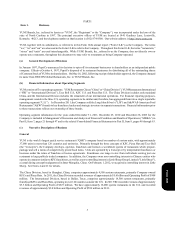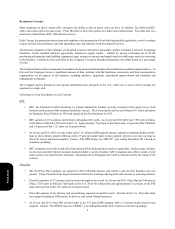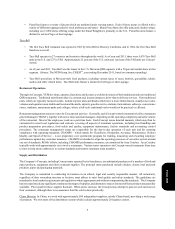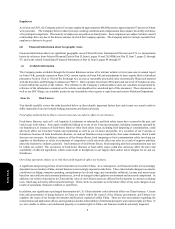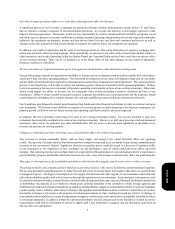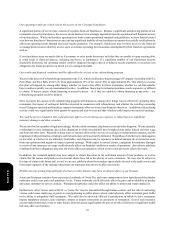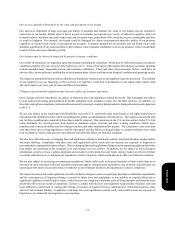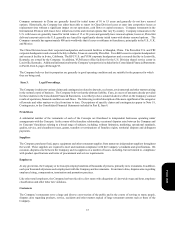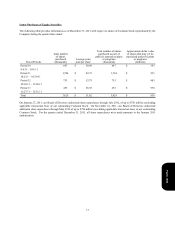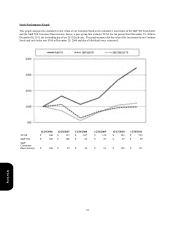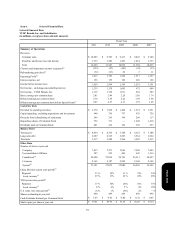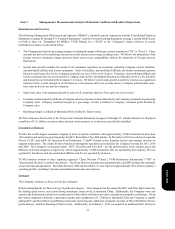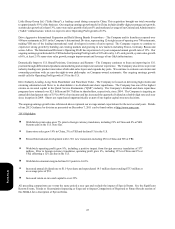Pizza Hut 2011 Annual Report Download - page 117
Download and view the complete annual report
Please find page 117 of the 2011 Pizza Hut annual report below. You can navigate through the pages in the report by either clicking on the pages listed below, or by using the keyword search tool below to find specific information within the annual report.
13
Company restaurants in China are generally leased for initial terms of 10 to 15 years and generally do not have renewal
options. Historically, the Company has either been able to renew its China Division leases or enter into competitive leases at
replacement sites without a significant impact on our operations, cash flows or capital resources. Company restaurants in the
International Division with leases have initial lease terms and renewal options that vary by country. Company restaurants in the
U.S. with leases are generally leased for initial terms of 15 or 20 years and generally have renewal options; however, Pizza Hut
delivery/carryout units in the U.S. generally are leased for significantly shorter initial terms with shorter renewal options. The
Company currently has approximately 800 units worldwide that it leases or subleases to franchisees, principally in the U.S., U.K.
and Mexico.
The China Division leases their corporate headquarters and research facilities in Shanghai, China. The Pizza Hut U.S. and YRI
corporate headquarters and a research facility in Dallas, Texas are owned by Pizza Hut. Taco Bell leases its corporate headquarters
and research facility in Irvine, California. The KFC U.S. and YUM corporate headquarters and a research facility in Louisville,
Kentucky are owned by the Company. In addition, YUM leases office facilities for the U.S. Division shared service center in
Louisville, Kentucky. Additional information about the Company’s properties is included in the Consolidated Financial Statements
in Part II, Item 8, pages 48 through 93.
The Company believes that its properties are generally in good operating condition and are suitable for the purposes for which
they are being used.
Item 3. Legal Proceedings.
The Company is subject to various claims and contingencies related to lawsuits, real estate, environmental and other matters arising
in the normal course of business. The Company believes that the ultimate liability, if any, in excess of amounts already provided
for these matters in the Consolidated Financial Statements, is not likely to have a material adverse effect on the Company’s annual
results of operations, financial condition or cash flows. The following is a brief description of the more significant of the categories
of lawsuits and other matters we face from time to time. Descriptions of specific claims and contingencies appear in Note 19,
Contingencies, to the Consolidated Financial Statements included in Part II, Item 8.
Franchisees
A substantial number of the restaurants of each of the Concepts are franchised to independent businesses operating under
arrangements with the Concepts. In the course of the franchise relationship, occasional disputes arise between the Company and
its Concepts’ franchisees relating to a broad range of subjects, including, without limitation, marketing, operational standards,
quality, service, and cleanliness issues, grants, transfers or terminations of franchise rights, territorial disputes and delinquent
payments.
Suppliers
The Company purchases food, paper, equipment and other restaurant supplies from numerous independent suppliers throughout
the world. These suppliers are required to meet and maintain compliance with the Company’s standards and specifications. On
occasion, disputes arise between the Company and its suppliers on a number of issues, including, but not limited to, compliance
with product specifications and terms of procurement and service requirements.
Employees
At any given time, the Company or its Concepts employ hundreds of thousands of persons, primarily in its restaurants. In addition,
each year thousands of persons seek employment with the Company and its restaurants. From time to time, disputes arise regarding
employee hiring, compensation, termination and promotion practices.
Like other retail employers, the Company has been faced in a few states with allegations of class-wide wage and hour, employee
classification and other labor law violations.
Customers
The Company’s restaurants serve a large and diverse cross-section of the public and in the course of serving so many people,
disputes arise regarding products, service, accidents and other matters typical of large restaurant systems such as those of the
Company.
Form 10-K


